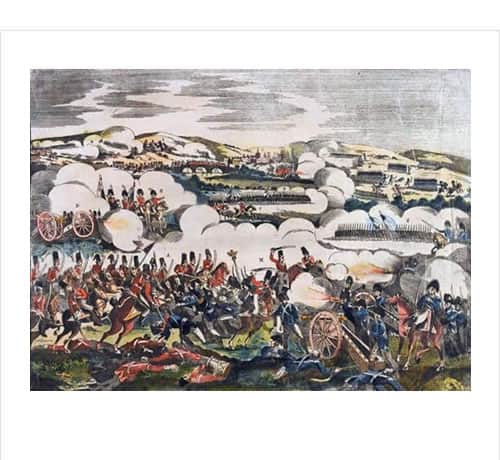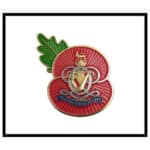Salamanca
This was the first battle on a large scale ever fought by Wellington.
The Honour is borne on the Guidon of the 4th Hussars.
Detail
The morning of the 22nd of July, 1812, dawned clear and fine.
Wellington observed that “Marmount is manoeuvring in the usual French style, nobody knows why”. During the morning Marmount noticed a movement of the British baggage wagons towards Salamanca and wondered if Wellington was preparing to retreat.
Accordingly, he ordered his left wing to move westwards, to try to work around Wellington’s right so that it could strike at his lines of communication. This move was the tactical blunder Wellington had been waiting for so patiently, for as two divisions of infantry and their supporting cavalry marched away from the French left, an opening was made in their formation.
The British infantry in the centre was moved forward, and Le Marchant’s Brigade was sent to the rear of the right centre division. Pakenham ordered the British 3rd Division forward.
The French divisions were drawn out to the extent of a mile as the men toiled uphill through the dust of a hot July day. Pakenham’s division was quite concealed from them until it suddenly came into view. The French regiments hurried to get into position, but before they could do so the British 3rd Division fell upon them.
The French fought back bravely, but, taken unawares, they were swiftly broken and scattered.
On the left, the 3rd Division had swept through the enemy and had continued to press forward. The leading brigade had out-distanced the others, and suddenly found itself face to face with a second French division, in battle order.
It was then that Le Marchant led the Heavy Brigade forward. The three regiments advanced at the canter, with Lieutenant-Colonel Lord Edward Somerset leading the 4th Dragoons. They went forward obliquely to their right, between the British 3rd Division and right of the British centre.
The French division which was preparing to attack the advanced brigade of the 3rd Division hastily formed a square, and Le Marchant gave the order for the regiments to form a line to their front. Then the trumpets sounded the Charge, and the whole line broke into the gallop and crashed down on the French.
When the first line of the enemy was scattered, Le Marchant rallied his brigade, and led them forward against a second, and then, getting ever deeper into the French positions, against a third, which made a brave attempt to withstand the furious charge.
The Dragoons could not be stopped and, after a desperate fight with the sword against the bayonet, the French were broken and fled to a nearby wood, where they were savagely hunted.
One squadron of the 4th Dragoons, led by Lord Edward Somerset, came upon a French battery, charged it and captured five guns.
At last the victorious and exhausted Heavy Brigade was halted, and the 11th and 16th Light Dragoons, who had been following up the brigade, took on the chase. Le Marchant’s magnificent charge had made victory certain.
The French army of forty-eight thousand lost more than fourteen thousand men, the Allies lost five thousand out of a total of fifty-two thousand.
The 4th Dragoons lost 7 men killed, 1 officer and 21 men wounded and 64 horses killed.



